|
These nuggets of Upjohn history were distributed via Larry Reeves to everyone on the Pfizer Kalamazoo manufacturing site QTS broadcast emails as "Jeremy's Corner" starting in 2019. Thank you, Larry! |
|
Corner #10 - For many years, what we now call API was known as "Tin City". The reason for that name is most off the buildings south and east of the power house were pole barn structures that had tin walls and rooves. Throughout its corporate existence, Upjohn sponsored many teams that played different sports against other in-house teams and teams from other local companies. City leagues were a huge deal. The Tin City softball team jersey below was used by Darrell Plough. His Upjohn team was a powerhouse in the summer softball leagues during the 70’s and 80’s.They won 71 consecutive league games and the season ending tournaments 9 straight seasons, all undefeated. They also won the State Industrial League Championship in 1979. The Upjohn Company chartered the team an Indian Trails bus to Virginia Beach, Virginia to compete in the national industrial tournament. |
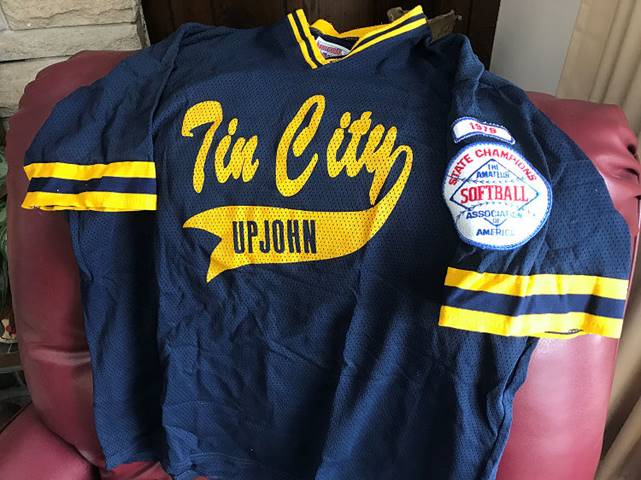
|
Corner #9 -
The
Upjohn Portage site was fully opened in 1951 after 5 years of
construction on a 1500 acre site. The total project cost was
$31,626,00.
The company was tremendously proud of the new manufacturing plant
and produced a number of publicity materials, including
this spiral-bound handout. It summarized Upjohn Company
operations including research programs. One of the photos in it,
showing the north-west corner of Building 41, is shown below. |
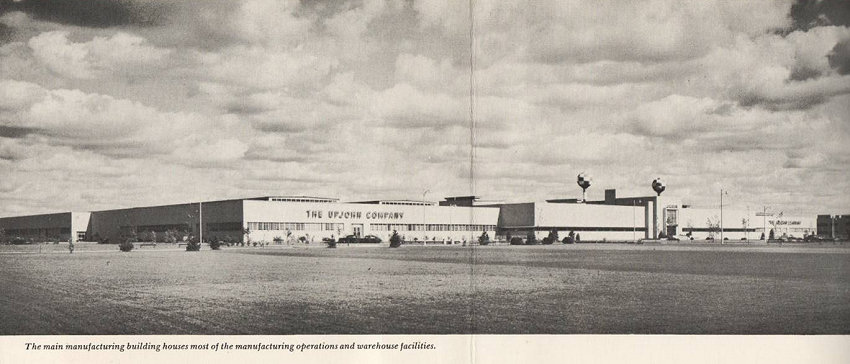
|
Corner #8 - Here's the latest addition to my bottle collection. Upjohn manufactured this Sore Throat tablet product from 1907 to 1948. I can't see a batch number on the label so this particular bottle was likely made before 1910, making it over 110 years old. You can see on the label it's a crazy mixture of ingredients, including Belladonna and Mercury. Patients had to be really tough back then. Seriously. The main ingredient is 1 grain of acetanilid (1 grain is 65mg). In the body, acetanilide is mostly converted to acetaminophen but excessive or prolonged of acetinalid is toxic because it interferes with the function of hemoglobin, the oxygen-carrying component in your blood. Thankfully when we have a sore throat today we can take medication that doesn't hurt us more than it helps! |
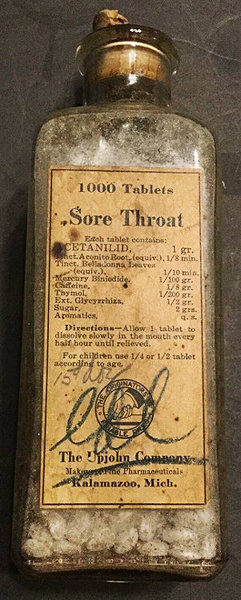
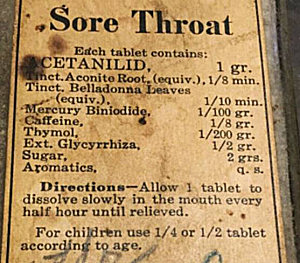
|
Corner #7 -
The
Upjohn Company was founded by W.E.Upjohn and two of his brothers in
1886. W.E. bought some property north of Augusta for a summer home
and named it Brook Lodge. In the 1950s the property was given to the
company and turned into a conference center. I've got a lot of
information about it on the Upjohn website
at this
link. I remember attending many scientific seminars and forums
there during the 1980s and 90s. Brook Lodge was noted for its
immaculate landscaping, excellent food and an open bar. Pharmacia &
Upjohn donated the site to MSU in 2000 for use as an event center.
Alas, MSU couldn't make a go of it and eventually closed it. Brook
Lodge has sat empty ever since. It almost became a marijuana-growing
operation in 2019 but that fell through. A couple of months ago I
was driving by and stopped to take some photos over the fence. The
caretaker noticed me and I persuaded him to let me roam the grounds.
Here is Brook Lodge in 2020. |
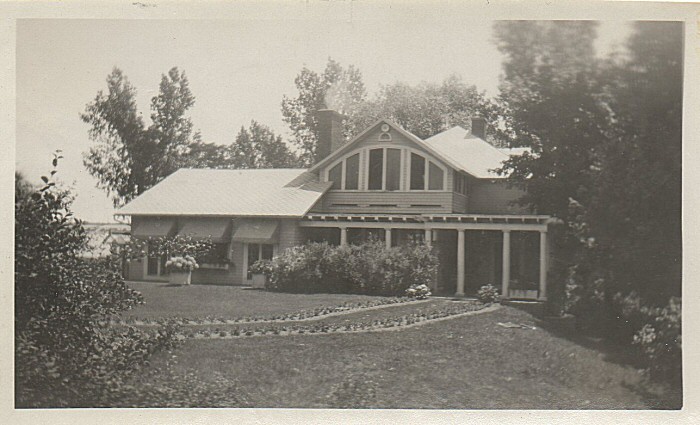
|
Corner #6 -
A
program for service anniversary awards began at Upjohn in January
1947. These first awards were pins as shown below. The buildings
cast into the pins are the Downtown Kalamazoo manufacturing tower
and the company headquarters building. These pins are solid gold but
are smaller than a penny. At todays prices each pin has about twenty
dollars worth of gold. The number of stars and the small jewel mean
a certain number of years of service, as shown below. Fifteen years
later in 1962 the pins were phased out and replaced by larger
rectangular gold pins. Not many of these old pins have survived into
2019 but there are half a dozen in the hands of local Upjohn
collectors. There's more information on service awards
at this link.
|
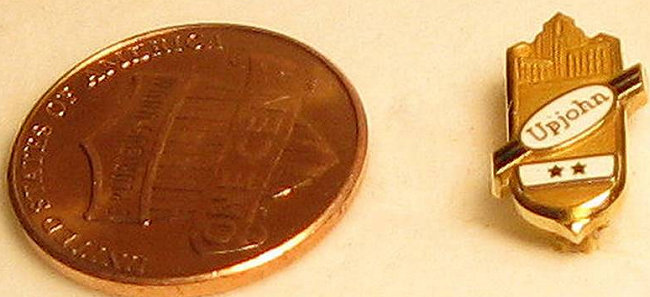
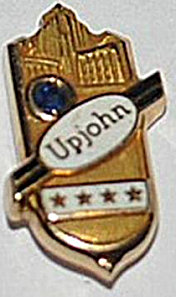

|
Corner #5 - Here's a postcard from 109 years ago showing an Upjohn baseball team in 1910. Every company in town back in that era fielded numerous sports teams for both men and women. City leagues ensured real competition and winning a trophy was serious bragging rights in the community. Upjohn-sponsored sports teams continued right up into the 1990s. Written on the back of the postcard is that this photo was taken on college grounds, which could be either K College or WMU. |
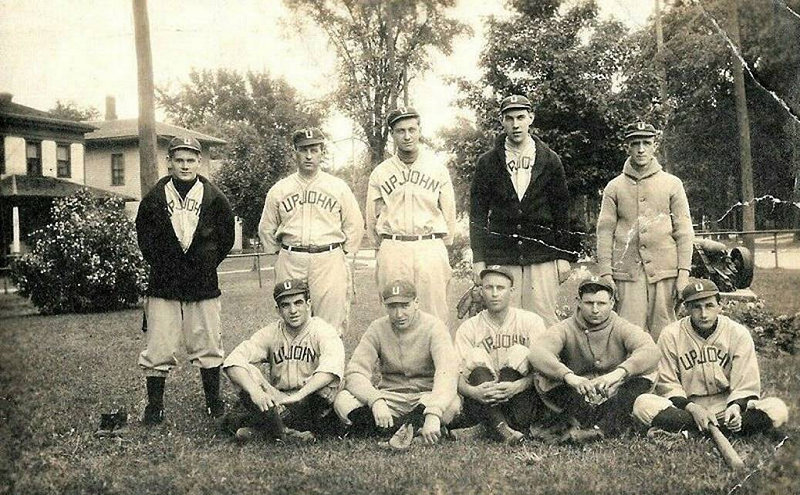
|
Corner #4 - In the 1960s Upjohn sold a lot of travel cases. These contained a variety of Upjohn over-the-counter products that could be use to treat minor health problems when away from home. Usually this was when families were on vacation. The hard plastic case was robust enough for cramming into a suitcase without breaking any of the glass vials and bottles inside it. In the travel case below, Kaopectate is for diarrhoea, Phenolax is a mild laxative, Alkets is for an upset stomach, Pyrroxate is for colds, PAC is for pain, Orthoxicol is for coughs and Mycitracin is for cuts, burns and scrapes. Unicap was a vitamin. All these were well-known Upjohn products. These bottles would have been filled and placed into the travel cases on a short production line in Building 41. This particular example was sold in 1964 and is in great shape for being 55 years old. There is more information on travel cases at this link. |
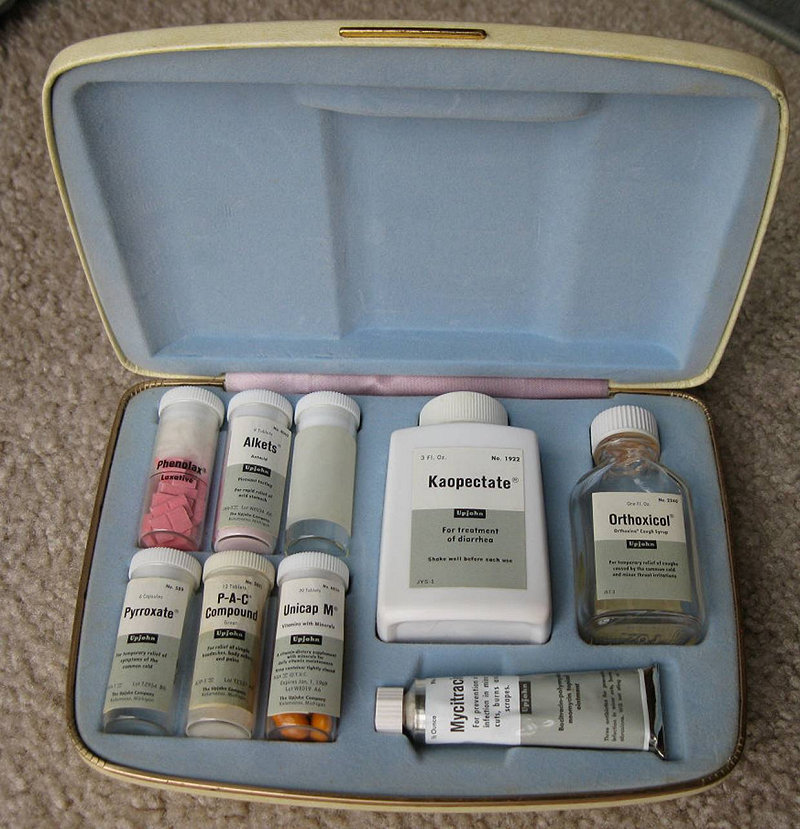
|
Corner #3 - Recently I bought a tube of Upjohn Carbuncle Ointment on eBay. Active ingredients are carbolic acid, ergot and zinc oxide. The dictionary defines a carbuncle as a cluster of boils that have multiple pus “heads.” They're tender and painful, and cause a severe infection which could leave a scar. This is also known as a staph skin infection. It sounds pretty awful. Amazingly, I can date this tube of ointment to the exact day it was filled in the Upjohn Downtown Kalamazoo manufacturing complex. It is batch number 58665 and in the one fluids production log book I have, I see that batch number 58665 was filled on June 23rd, 1924. This tube is in great condition for being 95 years old. |
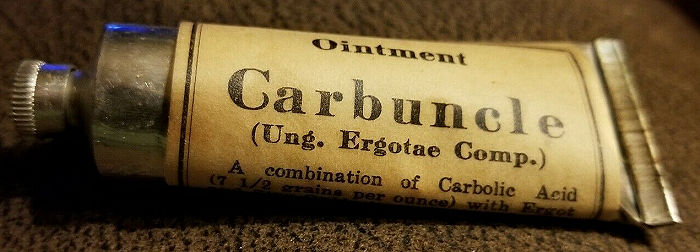
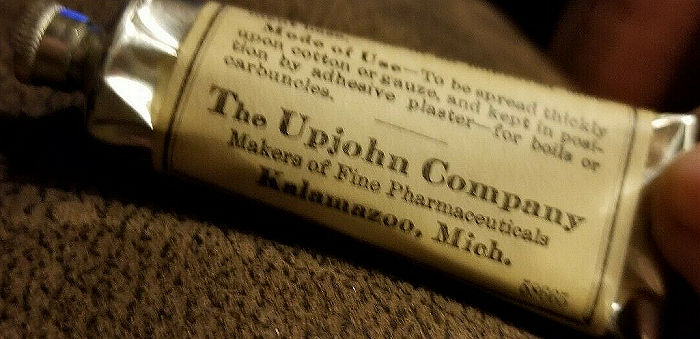
|
Corner #2 - In the late 1940s when Upjohn was building the Portage manufacturing site, it was critical to model the production layout in Building 41. Upjohn had over 5,000 small models of equipment and people created so they could model the layout of every production process in the building. This was to ensure enough space, equipment and people were allocated. Individual models were made from metal, wood or plastic, and were color coded. A recent estate sale find of mine is the representation of a Building 41 Upjohn filling/packaging line using those models from the 1940s. The piece of wood you see is 13 x 6 inches and it has a plexiglass cover. It is not an official company model used in the 1940s but probably created as a memento of that era. There's a January 1949 Upjohn News article that gives more information about the models and some photos of the complete building model layout at this link . |
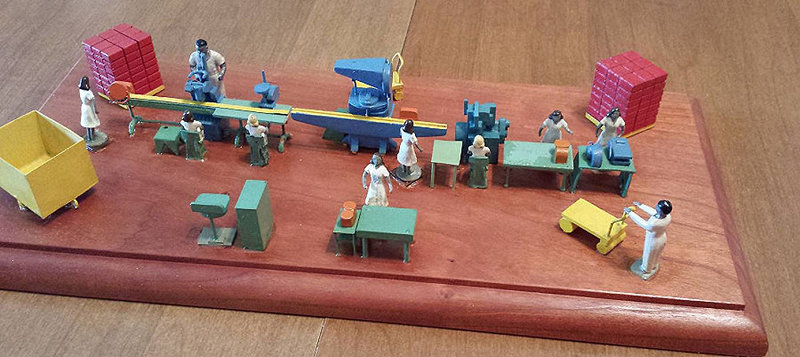
|
Corner #1 - Pfizer has a number of life-saving pharmaceuticals and some of those are made at the Portage site - I'm thinking of Solu Medrol, Solu Cortef and the other steroids. We've been making steroids here since the 1950s. But back in Upjohn days even the humble foot was given some attention with a Medicated Foot Powder, formulated to prevent fungal infectations. Upjohn sold this product for over 50 years, well into the 1980s. On the left below is a can likely from the 1940s and filled in the Upjohn Downtown Kalamazoo complex. On the right is a can from the 1970s or 80s which would have been filled in Building 41. |
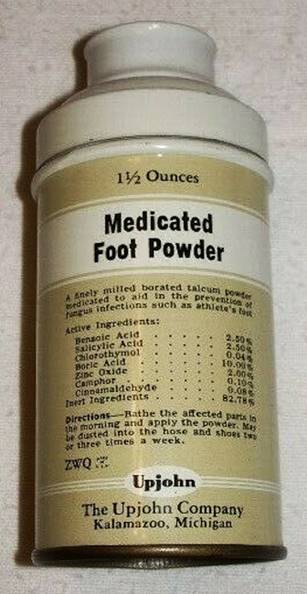
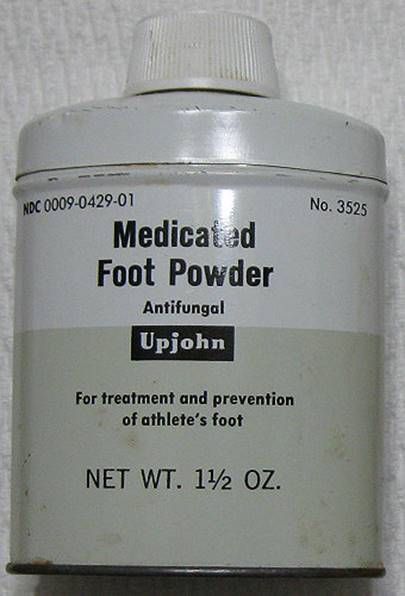
Go to Page 2 of Jeremy's Corner
Go to Page 3 of Jeremy's Corner
Go to Page 4 of Jeremy's Corner